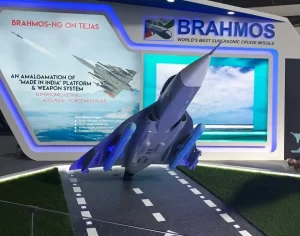Life of a Fighter Pilot: Interesting stories experiences flying Fighter Jets.
Suggestions and value additions are most welcome
For regular updates, please register here
Life of a Fighter Pilot: Interesting stories experiences flying Fighter Jets.
Suggestions and value additions are most welcome
For regular updates, please register here

Pic courtesy: Raksha anirveda
During Aero India 2019 mock up of Brahmos NG missile was displayed.
During Def Expo 2022 It was announced that the Brahmos NG would be integrated with LCA.
Some of the questions that arise are:-
Some of the relevant aspects related to the two projects and their integration are as follows (in random order) :-
Continue reading “310: Exportability: LCA + BRAHMOS Package”
Click on the link above
Suggestions and value additions are most welcome
For regular updates, please register here
Disclaimer:
Information and data included in the blog are for educational & non-commercial purposes only and have been carefully adapted, excerpted, or edited from sources deemed reliable and accurate. All copyrighted material belongs to respective owners and is provided only for purposes of wider dissemination.